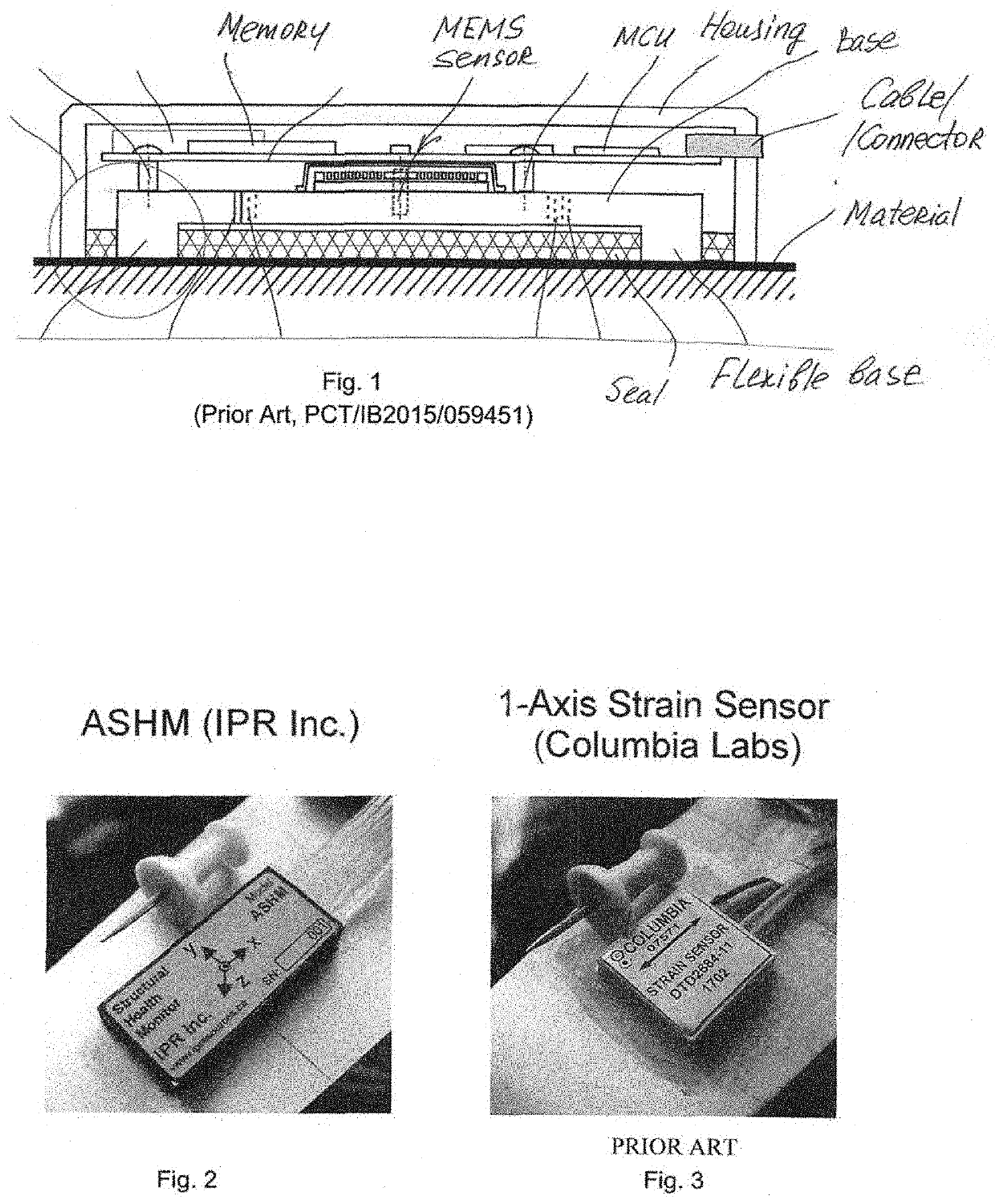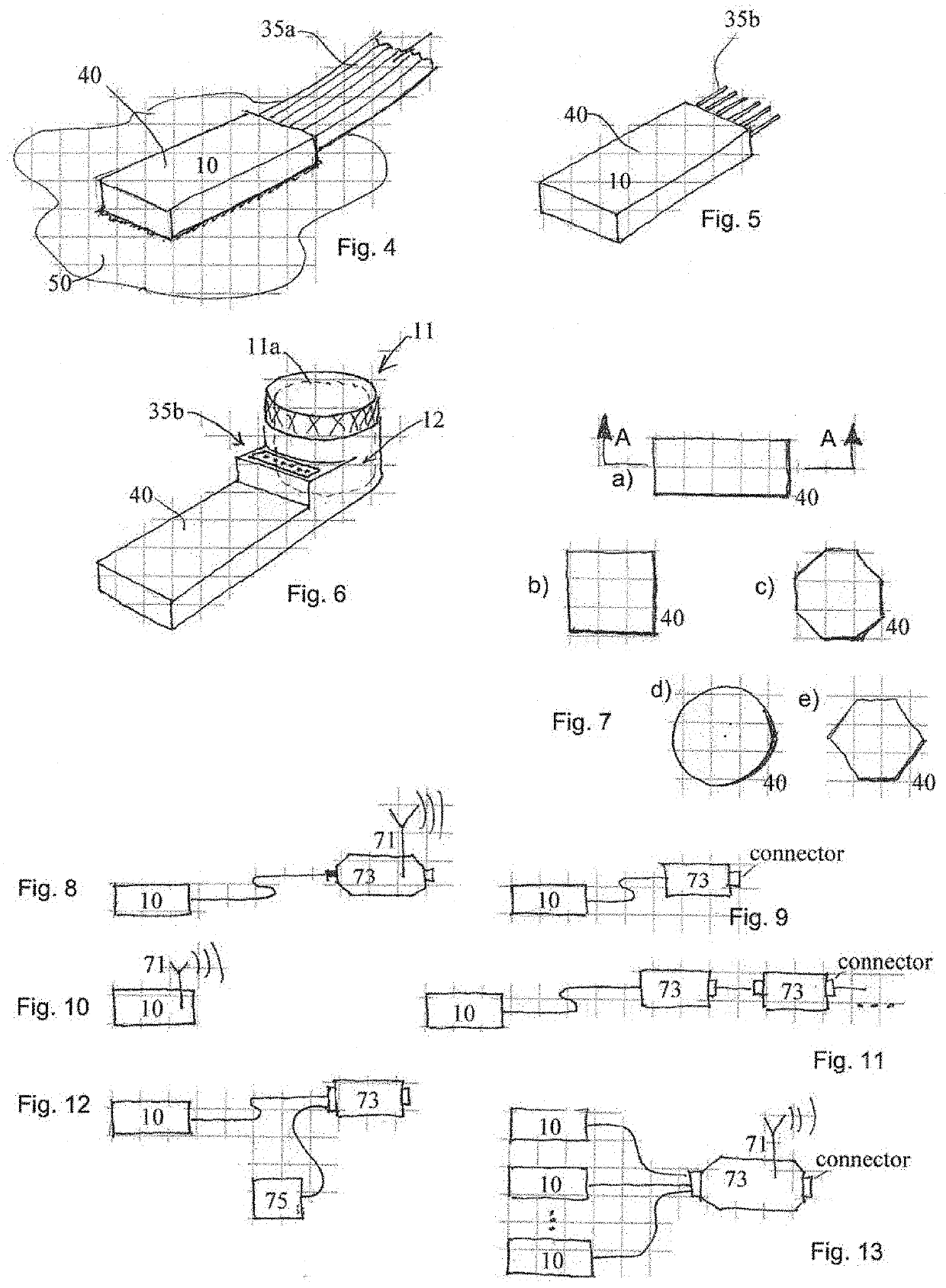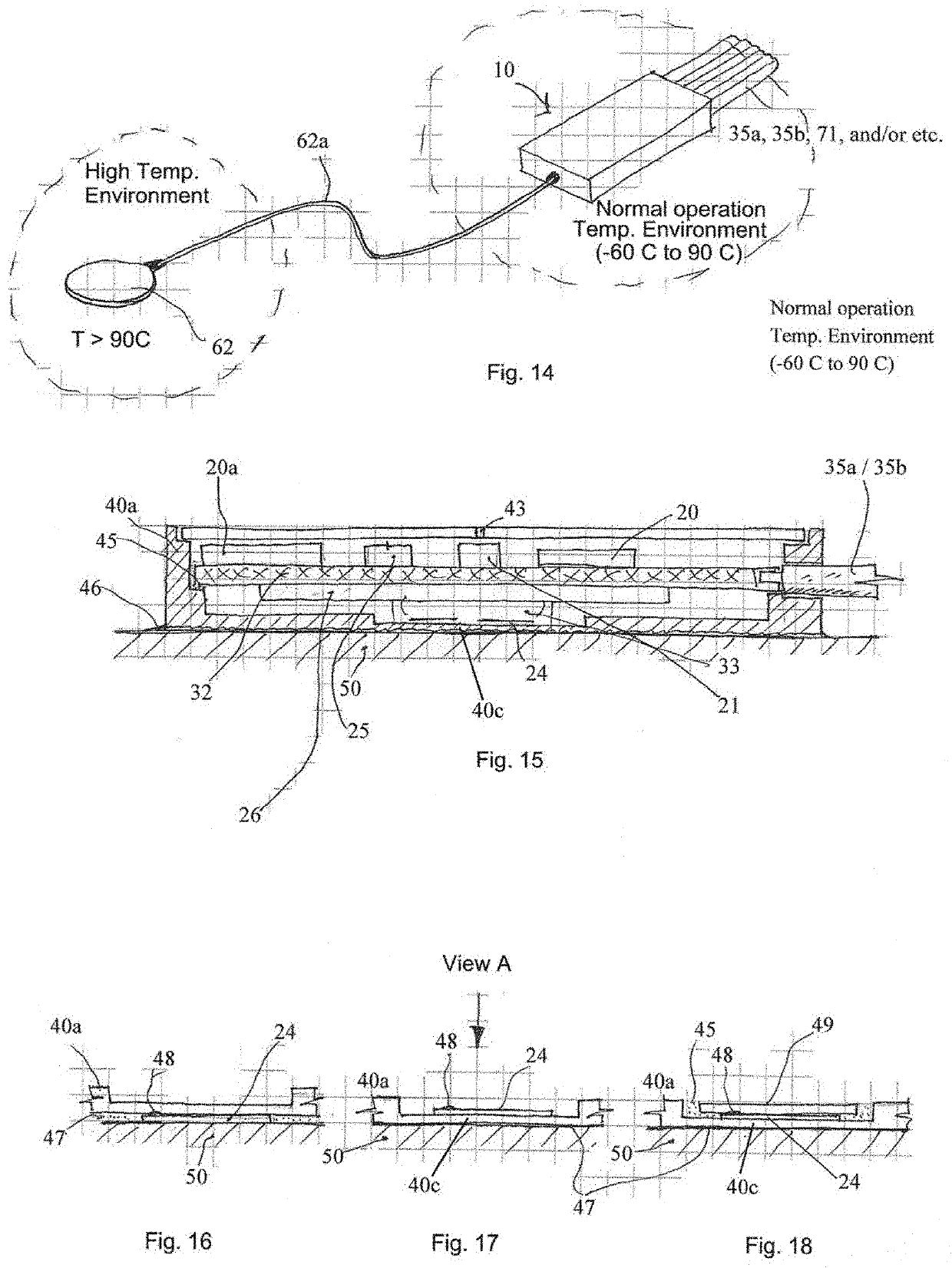Universal autonomous structural health monitor employing multi sensing inputs and on-board processing
a multi-sensor input and monitoring system technology, applied in the field of universal monitoring systems, can solve the problems of difficult and costly deducting accurate and representative, over-revisions that are often conducted prematurely, and reduce the efficiency of structural integrity, so as to improve the assessment of structural integrity and reduce the cos
- Summary
- Abstract
- Description
- Claims
- Application Information
AI Technical Summary
Benefits of technology
Problems solved by technology
Method used
Image
Examples
Embodiment Construction
Best Mode
[0167]Best mode of the invention is generally illustrated by FIGS. 2 and 15. A comparison of the best mode of the invention with a conventional one axis strain gauge (passive) is evident from FIGS. 2 and 3.
MODE FOR THE INVENTION
Mode for Invention
[0168]FIG. 2 shows an exemplary packaging embodiment of an autonomous structural health monitor (ASHM) of the present invention. FIG. 3, on the other hand, shows a prior art packaging of one-axis strain sensor by Columbia Labs.
[0169]In at least one embodiment of the present invention, it relates to a system for monitoring, logging and processing of events related to mechanical stress conditions and environmental conditions universal for each structure.
[0170]As will be a readily appreciated by the skilled person, all components discussed herein can be manufactured of any suitable material and by any suitable manufacturing method including those customary to micro-machining and MEMS technological processes as will be readily understoo...
PUM
| Property | Measurement | Unit |
|---|---|---|
| angle | aaaaa | aaaaa |
| resistance | aaaaa | aaaaa |
| weight | aaaaa | aaaaa |
Abstract
Description
Claims
Application Information
 Login to View More
Login to View More - R&D
- Intellectual Property
- Life Sciences
- Materials
- Tech Scout
- Unparalleled Data Quality
- Higher Quality Content
- 60% Fewer Hallucinations
Browse by: Latest US Patents, China's latest patents, Technical Efficacy Thesaurus, Application Domain, Technology Topic, Popular Technical Reports.
© 2025 PatSnap. All rights reserved.Legal|Privacy policy|Modern Slavery Act Transparency Statement|Sitemap|About US| Contact US: help@patsnap.com



